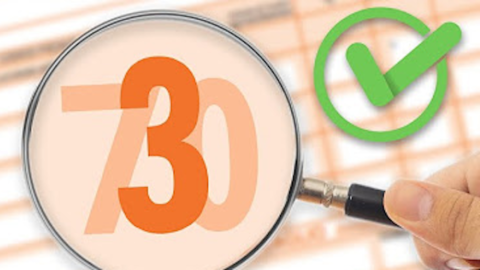Here we go again, the deadline is almost upon us: Italians are called to pay the Imu and Tasi 16 advance by 2015 June. Unlike what happened in 2014, this year the single municipal tax and the tax on services indivisible have an identical calendar, but continue to differ profoundly as regards the calculations to be made and the taxable persons required to pay. Let's see what are the main points to keep in mind.
1) DEADLINES
– 16 June: first installment of Imu and Tasi.
– 16 December: balance (with possible adjustment) of Imu and Tasi.
Goodbye to the intermediate deadline of October 16 that characterized the Tasi calendar last year.
2) WHO HAS TO PAY
– The Tasi is a tax on services that Municipalities provide without distinction to all citizens, such as street cleaning, public lighting or safety. You pay on all properties (buildings and building areas), but not on agricultural land (which also includes "little gardens"). The tenants and all those who fall into the category of "occupants" (regardless of the existence of a title such as the lease, loan or other) must pay a share of Tasi established by the Municipality in an interval that can vary between 10 and 30%. If the resolution of the Municipality does not indicate anything, the tenant is required to pay 10% of the Tasi. In the event of non-compliance by the occupant, the owner will not be held liable. Finally, for tenants, total exemption is triggered if the contract has a duration of less than six months during the same calendar year.
– The Imu is due on all properties except for main houses, unless they are luxury (cadastral categories A/1, A/8 and A/9, on which, however, the levy is reduced). The tax is also paid on agricultural land. As far as rented houses are concerned, tenants are not required to pay any payment: the tax falls entirely on the landlord. Lastly, the Imu is not due on a series of other properties: those of undivided property housing cooperatives used as the main residence by the assignee members; social housing; the only (non-leased) property owned by military or law enforcement personnel; the marital home entrusted to the ex-spouse in the event of legal separation or divorce; agricultural lands, even if not cultivated, which are located in the Municipalities classified as totally mountainous and in those of the smaller islands; agricultural land, even uncultivated, owned and managed by direct farmers and professional agricultural entrepreneurs in the Municipalities classified as partially mountainous as per the same Istat list.
It is also good to keep in mind two clarifications:
I) At a regulatory and fiscal level, we speak of a main residence only if the taxpayer and his family have their registered residence in the same building that they use as their habitual residence.
II) The set of appurtenances relating to the main residence includes real estate units of various kinds: warehouses and storage rooms (cadastral category C/2), garages, sheds, stables and stables (C/6), closed or open sheds (C /7). Only one real estate unit for each category is exempt from the IMU (if you have two garages, for example, you have to pay the tax on one of the two). For Tasi purposes, on the other hand, the appurtenances are assimilated to the main residence.
3) THE TAX BASE IS THE SAME FOR IMU AND TASI
To obtain it, it is necessary to re-evaluate the cadastral income by 5% and multiply it by the relative coefficients, for example 160 for the main residences and related appurtenances. Here is the list of coefficients according to the cadastral categories:
– 160 for buildings classified in the cadastral group A, with the exclusion of the cadastral category A/10 and in the cadastral categories C/2, C/6 and C/7;
– 140 for buildings classified in cadastral group B, and in categories C/3, C/4 and C/5 (craft workshops, gyms (non-profit), bathing establishments);
– 80 for buildings classified in category D/5 (credit institutions, exchange, insurance);
– 80 for buildings classified in the cadastral category A/10 (offices and private studios);
– 65 for buildings classified in cadastral group D (sheds, hotels, cinemas, etc.), with the exception of properties classified in category D/5, for which, as mentioned, the multiplier is 80;
– 55 for buildings classified in category C/1 (shops).
As far as building areas are concerned, the tax base is made up of the market value in common trade. The cadastral income that must be assumed for the purposes of the calculation is the one that resulted in the Land Registry on 2015 January XNUMX.
In general, the tax base is reduced by 50% for buildings of historical or artistic interest and for those declared unusable or uninhabitable by a municipal technician.
4) RATES AND DEDUCTIONS
This year both the IMU and the Tasi advance must be calculated with reference to the rates and deductions of 2014. This means that, if nothing has changed compared to the real estate assets of 2014, this time the calculation of the first installments of Imu and Tasi is very simple: in both cases, the amount to be paid by 16 June is equal to 50% of the total amount paid last year.
[Search for the 2014 rates and deductions of your Municipality on the website of the Ministry of Economy]
If this year the Municipality changes rates or deductions compared to 2014, the changes must be taken into account when paying the balance, which will include any adjustment.
As for the times to know the new numbers, they will not be short: rates and deductions relating to 2015 must be published on the Treasury website by 28 October next. "Naturally, nothing prevents that, in the event that the Municipality has already resolved on the subject of Imu and Tasi rates and deductions, perhaps resulting in more favorable conditions than in 2014, the taxpayer can refer to the resolutions relating to this year also for the payment of the advance”, reads a note from the Institute for finance and the local economy dated 8 May.
5) TAX CODES TO BE INDICATED ON MODEL F24
Here are the two patterns:
IMU
– for the main house and related appurtenances 3912;
– for rural buildings for instrumental use 3913;
– for land (Municipality) 3914;
– for land (State) 3915;
– for building areas (Municipality) 3916;
– for building areas (State) 3917;
– for other buildings (Municipality) 3918;
– for other buildings (State) 3919;
– for interest from assessment (Municipality) 3923;
– for assessment sanctions (Municipality) 3924;
– for buildings for productive use classified in cadastral group D (State) 3925;
– for buildings for productive use classified in cadastral group D (municipality increase) 3930.
TASI
– for the main house and related appurtenances 3958;
– for buildings other than main residences 3961;
– for rural buildings for instrumental use 3959;
– for building areas 3960.
6) TASI, PRECOMPILED MODELS REMAIN A MIRAGE
The law provides that from this year the Municipalities make available the pre-compiled payment models for the Tasi. However, Ifel again informs us that this is an unfeasible measure, because the Municipalities have no information on the changes that occurred in 2014 and in the first six months of 2015. At present, therefore, the Institute believes that the Municipalities are not obliged to send any pre-filled declaration.
7) IMU ON AGRICULTURAL LAND
In addition to the exemptions referred to in point 2, this year "a tax deduction of 200 euros is recognized - the Ifel Foundation wrote again on 20 March - to direct farmers and professional agricultural entrepreneurs, registered in the agricultural social security, who own land in hill towns and which are not included in the list prepared by Istat. The owners of these properties are entitled to an Imu deduction up to the amount of the tax due”.
The tax base for agricultural land is determined starting from the landlord income of January 25st, applying the revaluation coefficient of 135% and the multiplier XNUMX is applied to the result thus obtained.
Also read: "Tasi 2015 in Rome: deadlines, rates and deductions"
"Tasi 2015 in Milan: deadlines, rates and deductions"





